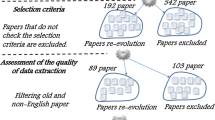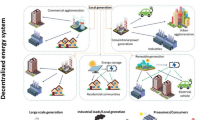Abstract
Nowadays, much research is concerned with execution of long-term continuous tasks, which produce data in real time, e.g. monitoring applications. These tasks can be run for months or years and they are usually resource intensive in terms of the large amounts of data which is processed per time unit. A Grid can potentially provide the amount of resources necessary to execute these tasks, but it might prove to be impossible or non-beneficial for a Grid to allocate resources for such long durations as these resources can be also requested by other clients or might join a Grid only for some periods of time. To resolve these differences, a client and a Grid Resource Allocator negotiate, and a client has to agree for a shorter execution period at the end of which it needs to negotiate again. In this paper, we discuss in detail a decision-making mechanism for a client as part of its negotiation strategy, which aims to increase the duration of execution periods and to decrease the duration of interruptions. This new strategy, ConTask, has been tested on a realistic Grid resource simulator, and it demonstrates better utilities than our strategy which has not been specifically designed for continuous tasks under various conditions.








Similar content being viewed by others
Notes
We do not focus on commercial Grids.
Note, “C” denotes a client and “G” denotes the GRA, while “Op”, “Mn” and “Mx” denote an optimal, minimum and maximum length of time in the upper index of the notations, presented in this section.
Note, the ideas of this strategy have been very briefly discussed in a short paper [15].
The figure shows a strongly periodic dependence for average execution periods over time only as an example.
References
Adabi, S., Movaghar, A. M., Rahmani, A., & Beigy, H. (2013). Negotiation strategies considering market, time and behavior functions for resource allocation in computational grid. The Journal of Supercomputing, 66(3), 1350–1389.
Ahmadi, M., & Stone, P. (2006). A multi-robot system for continuous area sweeping tasks. In Proceedings of the IEEE international conference on robotics and automation (pp. 1724–1729).
Akioka, S., & Muraoka, Y. (2004). Extended forecast of CPU and network load on computational Grid. In Proceedings of the 2004 IEEE international symposium on cluster computing and the grid, CCGrid 2004 (pp. 765–772).
Andrzejak, A., & Ceyran, M. (2005). Characterizing and predicting resource demand by periodicity mining. The Journal of Network and Systems Management, 13(2), 175–196.
Baarslag, T., Fujita, K., Gerding, E. H., Hindriks, K., Ito, T., Jennings, N. R., et al. (2013). Evaluating practical negotiating agents: Results and analysis of the 2011 international competition. Artificial Intelligence, 198, 73–103.
Baarslag, T., Hindriks, K., Jonker, C., Kraus, S., & Lin, R. (2012). The first automated negotiating agents competition (ANAC 2010). In T. Ito, M. Zhang, V. Robu, S. Fatima, & T. Matsuo (Eds.), New Trends in agent-based complex automated negotiations (Vol. 383, pp. 113–135). Studies in computational intelligence Berlin, Heidelberg: Springer.
Bahrammirzaee, A., Chohra, A., & Madani, K. (2013). An adaptive approach for decision making tactics in automated negotiation. Applied Intelligence, 39(3), 583–606.
Berman, F., Wolski, R., Casanova, H., Cirne, W., Dail, H., Faerman, M., et al. (2003). Adaptive computing on the grid using apples. IEEE Transactions on Parallel and Distributed Systems, 14(4), 369–382.
Castro, P. M., Barbosa-Póvoa, A. P., Matos, H. A., & Novais, A. Q. (2004). Simple continuous-time formulation for short-term scheduling of batch and continuous processes. Industrial & Engineering Chemistry Research, 43(1), 105–118.
Chen, L., Reddy, K., & Agrawal, G. (2004). GATES: a grid-based middleware for processing distributed data streams. In Proceedings of the 13th IEEE international symposium on high performance distributed computing (pp. 192–201).
Faratin, P., Sierra, C., & Jennings, N. R. (1998). Negotiation decision functions for autonomous agents. Robotics and Autonomous Systems, 24(3–4), 159–182.
Foster, I., Kesselman, C., & Tuecke, S. (2001). The anatomy of the grid: Enabling scalable virtual organizations. International Journal of High Performance Computing Applications, 15, 200–222.
Ghanem, M., Guo, Y., Hassard, J., Osmond, M., & Richards, M. (2004). Sensor grids for air pollution monitoring. In Proceeding of the 3rd UK e-Science all hands meeting.
Haberland, V., Miles, S., & Luck, M. (2012). Adaptive negotiation for resource intensive tasks in Grids. In K. Kersting, M. Toussaint (Eds.), Proceedings of the 6th starting AI researchers’ symposium of frontiers in artificial intelligence and applications (Vol. 241, pp. 125–136).New York: IOS Press.
Haberland, V., Miles, S., & Luck, M. (2014). Negotiation to execute continuous long-term tasks. In T. Schaub, G. Friedrich, B. O’Sullivan (Eds.), Proceedings of the 21st European conference on artificial intelligence of frontiers in artificial intelligence and applications (Vol. 263, pp. 1019–1020). New York: IOS Press.
Haberland, V., Miles, S., & Luck, M. (2015). Adjustable fuzzy inference for adaptive grid resource negotiation. In K. Fujita, T. Ito, M. Zhang, V. Robu (Eds.), Next Frontier in agent-based complex automated negotiation, studies of computational intelligence (Vol. 596, pp. 37–57). Japan: Springer.
Hindriks, K., Jonker, C. M., Kraus, S., Lin, R., & Tykhonov, D. (2009). Genius: Negotiation environment for heterogeneous agents. In Proceedings of the 8th international conference on autonomous agents and multiagent systems, AAMAS ’09 (Vol. 2, pp. 1397–1398), Richland, SC.
Hindriks, K., Jonker, C. M., & Tykhonov, D. (2009). The benefits of opponent models in negotiation. In Proceedings of the IEEE/WIC/ACM international joint conferences on web intelligence and intelligent agent technologies, 2, 439–444.
Hou, C. (2004). Predicting agents tactics in automated negotiation. In Proceedings of the IEEE/WIC/ACM international conference on intelligent agent technology, 2004, 127–133.
Iosup, A., Li, H., Jan, M., Anoep, S., Dumitrescu, C., Wolters, L., et al. (2008). The grid workloads archive. The Journal of Future Generation Computer System, 24(7), 672–686.
Kondo, D., Taufer, M., Brooks, C., Casanova, H., & Chien, A. (2004). Characterizing and evaluating desktop grids: an empirical study. In Proceedings of the 18th international parallel and distributed processing symposium.
Lang, F. (2005). Developing dynamic strategies for multi-issue automated contracting in the agent based commercial grid. In Proceedings of the IEEE international symposium on cluster computing and the grid, 1, 342–349.
Mamdani, E. H. (1977). Application of fuzzy logic to approximate reasoning using linguistic synthesis. IEEE Transactions on Computers, C–26(12), 1182–1191.
Narayanan, V., & Jennings, N.R. (2005). An adaptive bilateral negotiation model for e-commerce settings. In Proceedings of the 7th international IEEE conference on E-commerce technology (pp. 34–39).
Nudd, G. R., Kerbyson, D. J., Papaefstathiou, E., Perry, S. C., Harper, J. S., & Wilcox, D. V. (2000). PACE—a toolset for the performance prediction of parallel and distributed systems. High Performance Computing Applications, 14(3), 228–251.
Ren, F., Zhang, M., & Sim, K. M. (2009). Adaptive conceding strategies for automated trading agents in dynamic, open markets. Decision Support Systems, 46(3), 704–716.
Rubinstein, A. (1982). Perfect equilibrium in a bargaining model. Econometrica, 50(1), 97–109.
Silaghi, G. C., Şerban, L. D., & Litan, C. M. (2012). A time-constrained SLA negotiation strategy in competitive computational grids. Future Generation Computer Systems, 28(8), 1303–1315.
Sim, K. M. (2005). Equilibria, prudent compromises, and the “waiting” game. IEEE Transactions on Systems, Man, and Cybernetics, Part B: Cybernetics, 35(4), 712–724.
Sim, K. M. (2005). From market-driven e-negotiation to market-driven g-negotiation. In Proceedings of the 2005 IEEE international conference on e-technology, e-commerce and e-service (pp. 408–413). New York: IEEE Computer Society.
Sim, K. M. (2008). Evolving fuzzy rules for relaxed-criteria negotiation. IEEE Transactions on Systems, Man, and Cybernetics, Part B: Cybernetics, 38(6), 1486–1500.
Sim, K. M., & Ng, K. F. (2006). A relaxed-criteria bargaining protocol for grid resource management. In Proceedings of the sixth IEEE international symposium on cluster computing and the grid (Vol. 2, p. 5).
Sim, K. M., & Wang, S. Y. (2004). Flexible negotiation agent with relaxed decision rules. IEEE Transactions on Systems, Man, and Cybernetics, Part B: Cybernetics, 34(3), 1602–1608.
Spooner, D., Jarvis, S., Cao, J., Saini, S., & Nudd, G. (2003). Local grid scheduling techniques using performance prediction. IEEE Proceedings—Computers and Digital Techniques, 150(2), 87–96.
Wolski, R. (2003). Experiences with predicting resource performance on-line in computational grid settings. SIGMETRICS Performance Evaluation Review, 30(4), 41–49.
Wolski, R., Spring, N. T., & Hayes, J. (1999). The network weather service: A distributed resource performance forecasting service for metacomputing. Future Generation Computer Systems, 15(5–6), 757–768.
Wooldridge, M., & Jennings, N. R. (1995). Intelligent agents: Theory and practice. The Knowledge Engineering Review, 10, 115–152.
Yuan, Y., Wu, Y., Yang, G., & Zheng, W. (2008). Adaptive hybrid model for long term load prediction in computational grid. In Proceedings of the 8th IEEE international symposium on cluster computing and the grid, CCGRID ’08 (pp. 340–347).
Zadeh, L. A. (1965). Fuzzy sets. Information and Control, 8(3), 338–353.
Author information
Authors and Affiliations
Corresponding author
Rights and permissions
About this article
Cite this article
Haberland, V., Miles, S. & Luck, M. Negotiation strategy for continuous long-term tasks in a grid environment. Auton Agent Multi-Agent Syst 31, 130–150 (2017). https://doi.org/10.1007/s10458-015-9316-2
Published:
Issue Date:
DOI: https://doi.org/10.1007/s10458-015-9316-2




